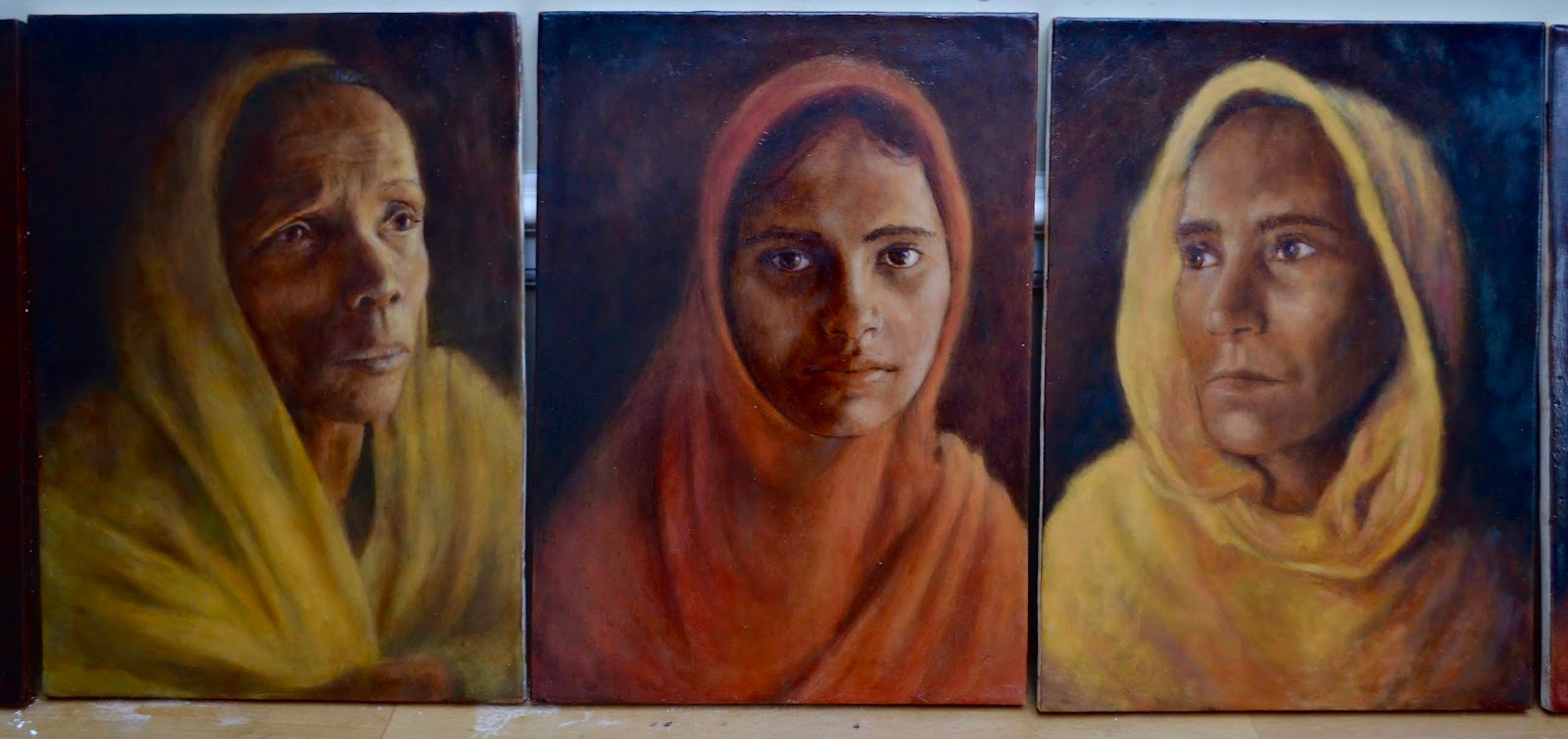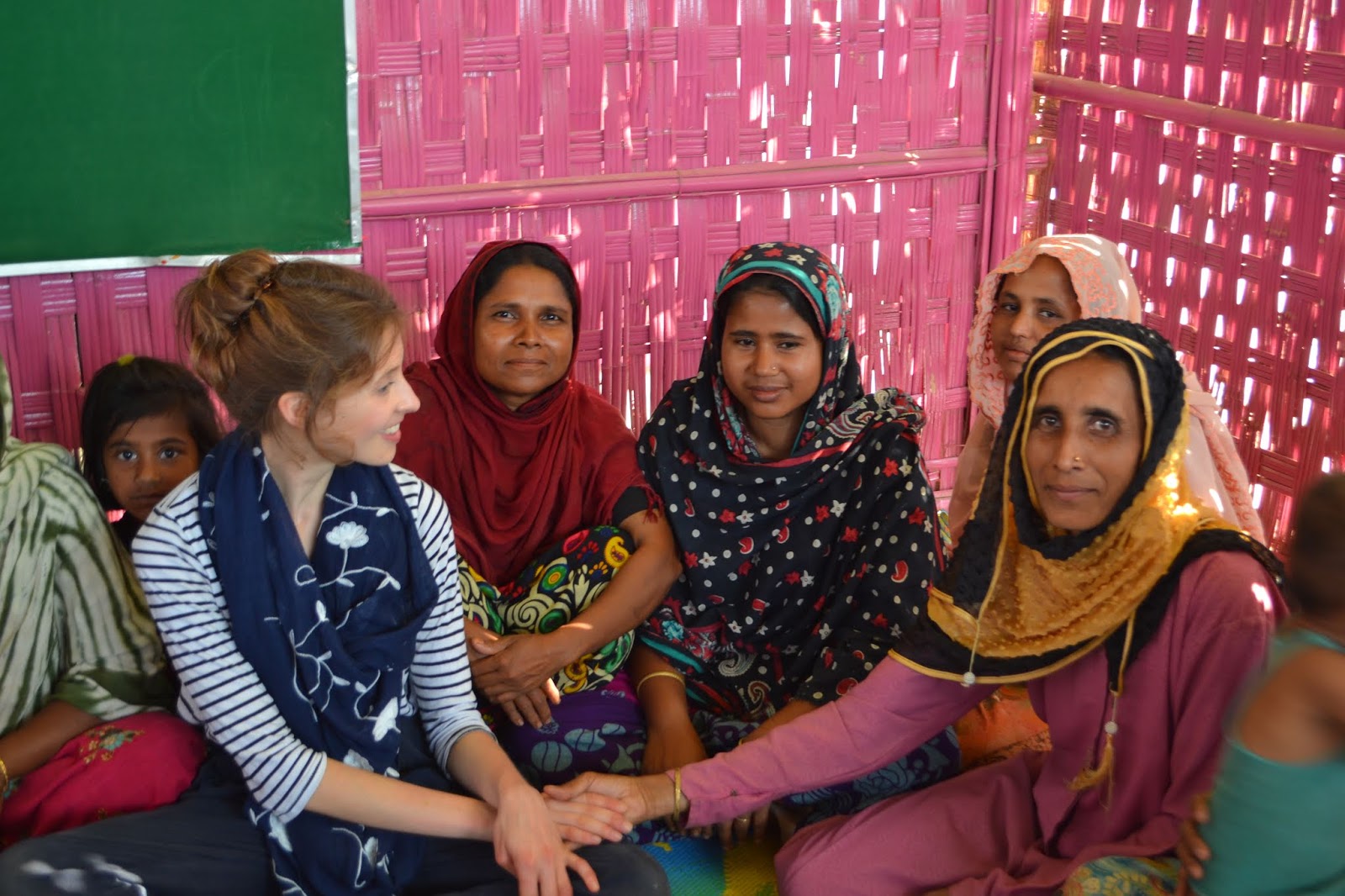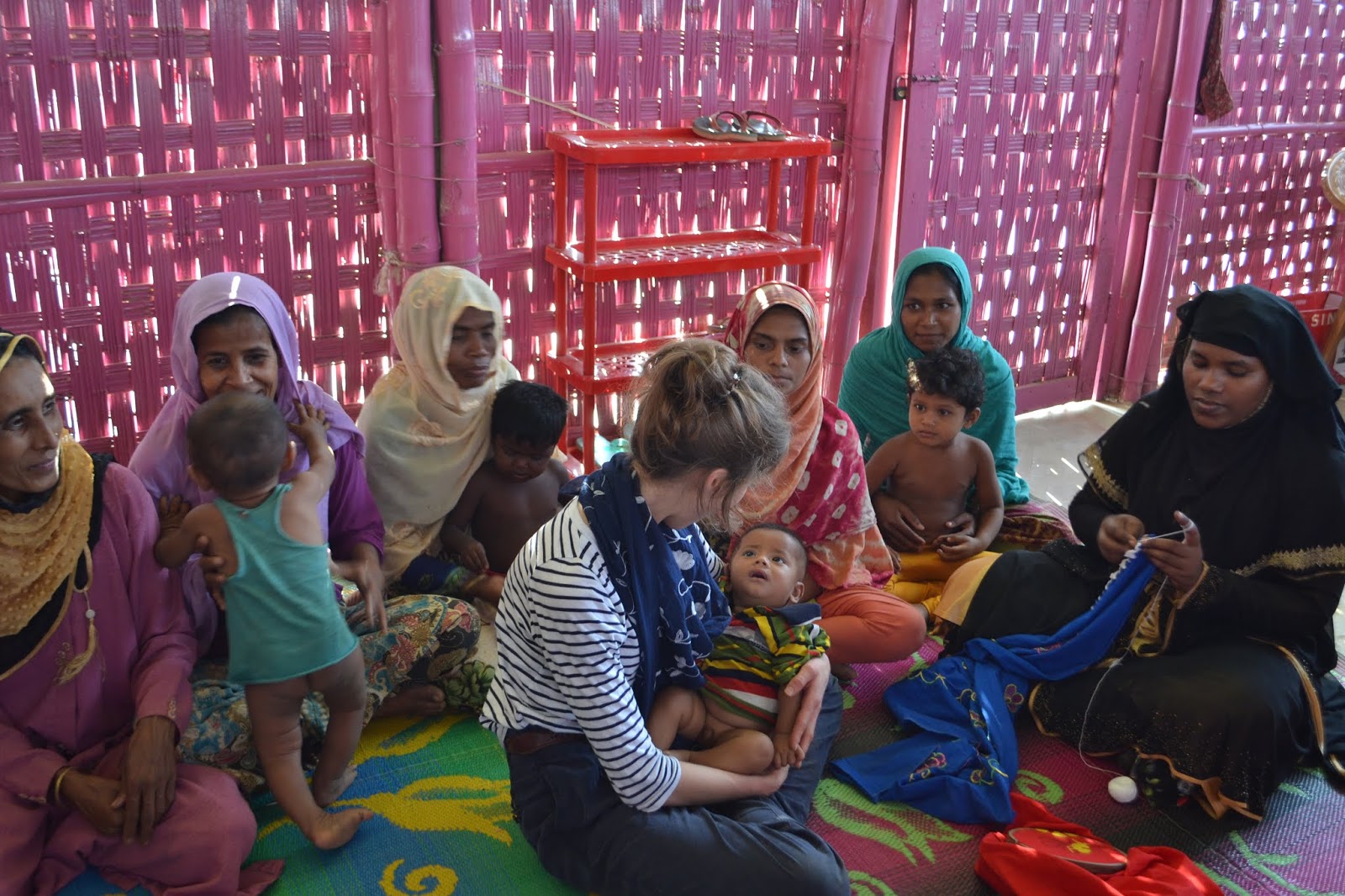Rohingya Genocide – the forgotten women painted by Hannah Rose Thomas

By Milena Rampoldi,
ProMosaik. In the following a second interview with the artist Hannah Rose
Thomas I already talked to about her project
with Yezidi women. In this second interview I asked her questions about the
Rohingya women she met and painted in Bangladesh.
ProMosaik. In the following a second interview with the artist Hannah Rose
Thomas I already talked to about her project
with Yezidi women. In this second interview I asked her questions about the
Rohingya women she met and painted in Bangladesh.
Tell us about your first
impression of Rohingya women when you met them?
impression of Rohingya women when you met them?
Conditions
in the camp are hard; overcrowding, insufficient rations or water, stifling
heat and no electricity. However, in spite of the hardship, many of the women I
speak to express thankfulness to be here. Here they can sleep in peace, without
fear. Here their children have the right to an education. Here they can attend
prayers freely, without fear of attack. Here they can live a life of dignity.
in the camp are hard; overcrowding, insufficient rations or water, stifling
heat and no electricity. However, in spite of the hardship, many of the women I
speak to express thankfulness to be here. Here they can sleep in peace, without
fear. Here their children have the right to an education. Here they can attend
prayers freely, without fear of attack. Here they can live a life of dignity.
How can your art contribute NOT to forget this forgotten people?
The
Yezidi and Rohingya communities are among the most persecuted religious
minority groups in the world. It is my hope that these portraits will be an expression
of the sacred value of each human being,
regardless of religious, racial or gender differences.
Yezidi and Rohingya communities are among the most persecuted religious
minority groups in the world. It is my hope that these portraits will be an expression
of the sacred value of each human being,
regardless of religious, racial or gender differences.

How can your art contribute NOT to forget this forgotten people?
Art
can be used as a powerful tool for advocacy and for giving a voice to the
voiceless. Through showing these paintings in places such as Parliament and the
UN, these portraits are a poignant reminder of the human stories behind
the statistics.
can be used as a powerful tool for advocacy and for giving a voice to the
voiceless. Through showing these paintings in places such as Parliament and the
UN, these portraits are a poignant reminder of the human stories behind
the statistics.
How can art help refugees who are in the situation of the Rohingya Muslims?
The child friendly spaces
in the camps are a
in the camps are a
safe haven where the Rohingya children
have freedom to play and to
express themselves through art.
express themselves through art.
I spent a couple of mornings painting with the children there. The
children all want to paint colourful flowers, trees and their homes. Looking
around the camp you can understand why – there is not a tree in sight!
children all want to paint colourful flowers, trees and their homes. Looking
around the camp you can understand why – there is not a tree in sight!
Nine months ago, before the
most recent influx, this area in Bangladesh was a forest populated by wild
elephants.
most recent influx, this area in Bangladesh was a forest populated by wild
elephants.
There are now over one
million Rohingya refugees.
million Rohingya refugees.

Tell us about the story of the women you met.
My heart is full of the
stories of suffering I’ve heard here in the camp. Each shelter, every family
holds memories of grief and terror.
stories of suffering I’ve heard here in the camp. Each shelter, every family
holds memories of grief and terror.
When the military came to their villages it was like hell; they began shooting and burning
the houses. Everyone was running in terror from
their homes; loved ones
the houses. Everyone was running in terror from
their homes; loved ones
were killed or scattered in the jungle. Those who survived spent days walking through the jungle without food or water, until exhausted they arrive at the
border.
border.
What do Rohingya expect from your as artist and from the world?
The Rohingya women I spoke
to were moved to hear that I hoped to paint
their portraits to ensure that their voices were heard. They were convinced
that with the support of the international community, they would have the
protection necessary to ensure their security in Myanmar, if they were to
return.
to were moved to hear that I hoped to paint
their portraits to ensure that their voices were heard. They were convinced
that with the support of the international community, they would have the
protection necessary to ensure their security in Myanmar, if they were to
return.

How to struggle against genocide with art?
Listening the stories of the Yezidi and Rohingya women, it is evident how dehumanisation – when one group denies
the humanity of another – is a primary instrument used to legitimise genocidal violence. Through painting the portraits of Yezidi and
Rohingya women, I hope to emphasise our shared humanity and that we have more
in common than what divides us. These paintings of Rohingya and
Yezidi women are a way to emotionally
engage the viewer and inspire compassion.
the humanity of another – is a primary instrument used to legitimise genocidal violence. Through painting the portraits of Yezidi and
Rohingya women, I hope to emphasise our shared humanity and that we have more
in common than what divides us. These paintings of Rohingya and
Yezidi women are a way to emotionally
engage the viewer and inspire compassion.
They are also meditations on grief and loss.
In
these portraits we see a glimpse of the Yezidi and Rohingya women’s unspeakable grief,
however it is also a reminder that we all face grief
and sorrow at different times in life. We are not so different; we are
inextricably connected to one another.
these portraits we see a glimpse of the Yezidi and Rohingya women’s unspeakable grief,
however it is also a reminder that we all face grief
and sorrow at different times in life. We are not so different; we are
inextricably connected to one another.



